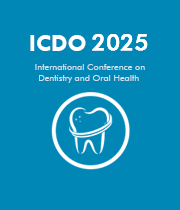Title: Raman spectroscopic analysis of enamel surface demineralization and remineralization using bioactive toothpastes
Abstract:
Laboratory study aimed to evaluate enamel demineralization under varying acidic conditions and the subsequent remineralization efficacy of casein phosphopeptide-amorphous calcium phosphate (CPP-ACP) and fluoride-enriched CPP-ACPF bioactive toothpastes. Extracted human premolar teeth (n = 48) were divided into four demineralization groups: Demin 1 (lactic acid, pH 4.5), Demin 2 (citric acid, pH 2.2), Demin 3 (citric acid, pH 4.5), and Demin 4 (hydrochloric acid, pH 1.2). Specimens were exposed to these acidic media for 1–240 h, followed by remineralization cycles (1–120 h). Mineral content and mechanical recovery were assessed via Raman spectroscopy (V?PO?³? band: 932–980 cm?¹) and Vickers microhardness testing, respectively. Acid exposure resulted in significant demineralization correlated with decreasing pH, Demin 4 and Demin 2 inducing the greatest mineral loss (Raman intensity reduced to 24.79 ± 2.07 and 28.20 ± 2.36, respectively, at 240 h). Both bioactive toothpastes significantly restored phosphate band intensity (p< 0.05), though CPP-ACPF exhibited enhanced efficacy in subsurface enamel, i.e., 41.72 ± 2.64 vs. CPP-ACP: 33.97 ± 2.73 after 120 h in Demin 4. Microhardness analysis showed comparable surface recovery between both formulations (p > 0.05). Clinically, the results support the use of calcium-phosphate-fluoride-based formulations for managing erosive enamel lesions, although further longitudinal studies are recommended to validate their long-term efficacy



